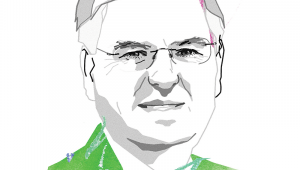Leicester has made the headlines in a number of ways of late, home of the champions of English Football as well as highly successful basketball and rugby union teams. Even the cricket team started the 2016 season with a win. Coming shortly after the discovery of Richard III in a city centre car park its been quite a period in the limelight for a city once described by Terry Wogan as “often mentioned in traffic reports but otherwise unknown to mankind”. However as the Economist has recently picked up on, there’s a lot more to Leicester than sport and dead kings, as scholars of regional economic development show us.
In many ways a classic example of a small to medium sized second tier city, Leicester has grasped the development opportunities presented to it by a succession of devolution and decentralisation policies put forward by government since the mid 2000s. In doing so it offers a series of pertinent lessons for economic policy makers. Starting with the sub-national review of economic policy in 2007, Leicestershire put in place one of the first Multi-Area Agreements in the country between the city and county councils. The other cities in the East Midlands struggled to put similar agreements in place. Indeed as a whole, the East Midlands was not successful in creating networked governance between the public and private sectors.
Three main lessons can be drawn from the experiences of both the East Midlands and Leicestershire. I have discussed these elsewhere (Quinn 2013, Quinn 2015) but, briefly, they are: that place has an important impact on policy outcomes; the role of local government is critical; and that strong leadership is essential. Without the pull of regional identity or an obvious area of economic functionality to draw together the private sector the East Midlands Development Agency (EMDA) struggled to attract private sector involvement in its governance initiatives, especially outside of its Nottinghamshire base. For Leicestershire however this was not the case. Businesses in the city and county tend to have a clear sense of place and belonging and there are obvious economic advantages to be had from collective efforts to grow the Leicestershire economy.
Leicestershire was also in a position to take advantage of two other inter-related factors that the other cities in the region were not. Firstly, local government can play a crucial role in governance at the sub-national tier. The local authorities in Leicestershire understood the need to work together despite their political differences. The involvement of the councils in the MAA gave it a sense of legitimacy and power that EMDA’s efforts simply could not achieve. Secondly, and related to this, Leicestershire has benefited from strong political leadership throughout the last decade. Initially through the political leaders of the city and county council in putting together the MMA, and latterly the electedmMayor of the city. These individuals have driven the economic agenda in the redevelopment of Leicester and without similar such strong leadership other areas of the country have lagged behind.
A major element of the physical regeneration of the city has come through a focus on the cultural, arts and heritage industries. This was a bold move by the authorities as the city and county had little or no reputation as places with strong arts industries. The city council and then the elected mayor pursued the creation of a new Cultural Quarter, which transformed a previously derelict part of the city. This included the building of a multi-million pound theatre (CURVE) and independent cinema and arts centre (Phoenix) at a time when local authorities were under increasing pressure to reduce spending. Alongside this the city also tapped into the discovery of Richard III by creating the Leicester Heritage Trail emphasising the city’s rich, if largely ignored, history.
As the Economist points out, Leicester was at one stage the second richest city in Europe behind Vienna and has the building stock to reflect this fact. The innovative reuse of old building stock and imaginative reworking of the city’s infrastructure has seen a growth in the number of small entrepreneurial businesses being set up with Leicester now having the fastest business growth rate outside of London according to the economist.
This is discussed in new book chapter written by myself and Dr Richard Courtney of the Enterprise and Public Policy research unit that is due to be published later this month. Much of the focus of research into the use of culture and heritage focuses on Richard Florida’s seminal work on the creative class in large metropolitan areas, which may sometimes seem out of reach to smaller cities. We argue that Leicester’s use of heritage and culture should be viewed through the lens of the work of Lindeborg on the ‘Cinderella Principal’ in small Danish towns and cities. Here places with little or no background in arts and culture use it to create an image from scratch, which attracts new investment.
The development of the office of the Elected Mayor has also produced some interesting results, especially the extent to which the local population has become engaged in the process. The concept of Elected Mayors is a relatively new one in England with even London only establishing its mayor in 2000. Several cities in England have rejected the opportunity to establish such a role and, where ones have been put in place, turnout in elections has been disappointing. In Leicester however the elections to date have seen turnouts of 41% in 2011 and 59% in 2015. The office also attracted one of the local MPs to relinquish his seat in the House of Commons to stand for election, a reverse of the usual trend that has seen impressive local leaders leave local politics to take a place on the national stage.
The credibility that Sir Peter Soulsby lent to the office of mayor has allowed him to establish a clear role as the leader of the city’s economy. There are echoes here of the manner in which first Ken Livingstone and then Boris Johnson have established the role of mayor for London as a much more powerful position than the legislation actually intended for. With rumours emerging that Andy Burnham is considering a run for the new position of elected mayor for Greater Manchester, England could soon have a series of powerful political figures whose authority derives from their locality rather than Westminster. Leicester, as it does with sport, is at the forefront of these developments, and might be a model for others to follow.
This article was first published on the University of Leicester’s staff blog



















